
Keeping Things in the Dark, Again
Anna Škodenko, Darja Popolitova, Viktor Gurov and Francisco Martínez at the EKA Gallery in Tallinn untill October 25
Keeping Things in the Dark, Again is a collectively curated art project, based on ethnographic research. The exhibition at the EKA gallery is the final part of a trilogy, which reflects on the correlation between public secrets and shadow spaces in Ida-Virumaa.
The underground has been a hotbed for myths and stories for millennia, while the authorities recurrently attempt to transform those dark corners into spaces to light. Indeed, the earliest studio and the first museum happened in caves.
What had been concealed and kept in the dark has a particular efficacy while resurfacing and being on display. This exhibition presents different instances of this, reflecting on material hoarding, messages for the future, existentialist aesthetics and shelters where to test different sides of the self. People need hideouts and places to store things in the dark.
A four-artist installation has been the first outcome of our collective work, which was exhibited in the Riga Art Space (2022) and at the Sillamäe Museum (2023). In the meantime, we have been developing our installation and continued with our research and the exchange of ideas.
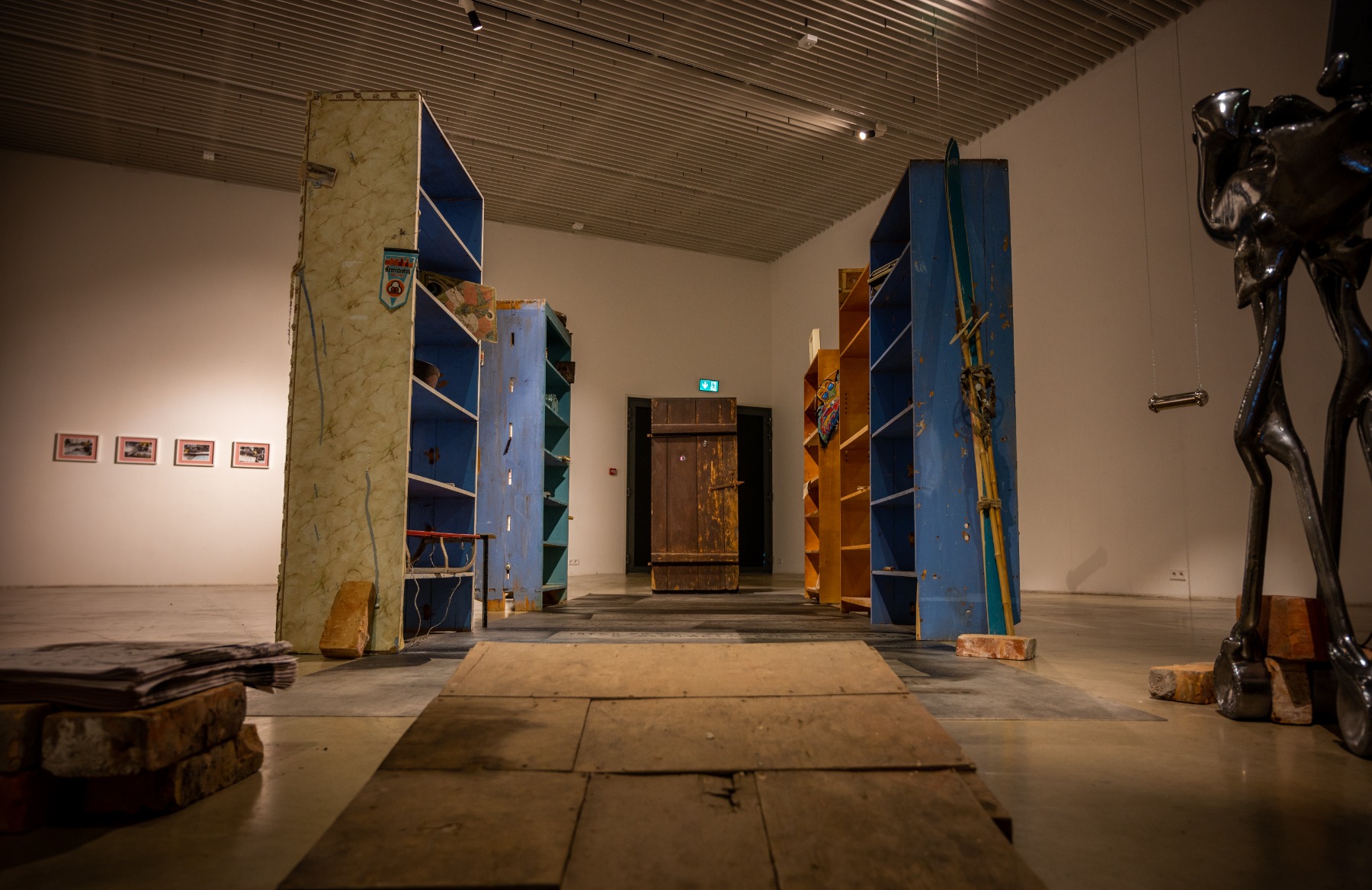
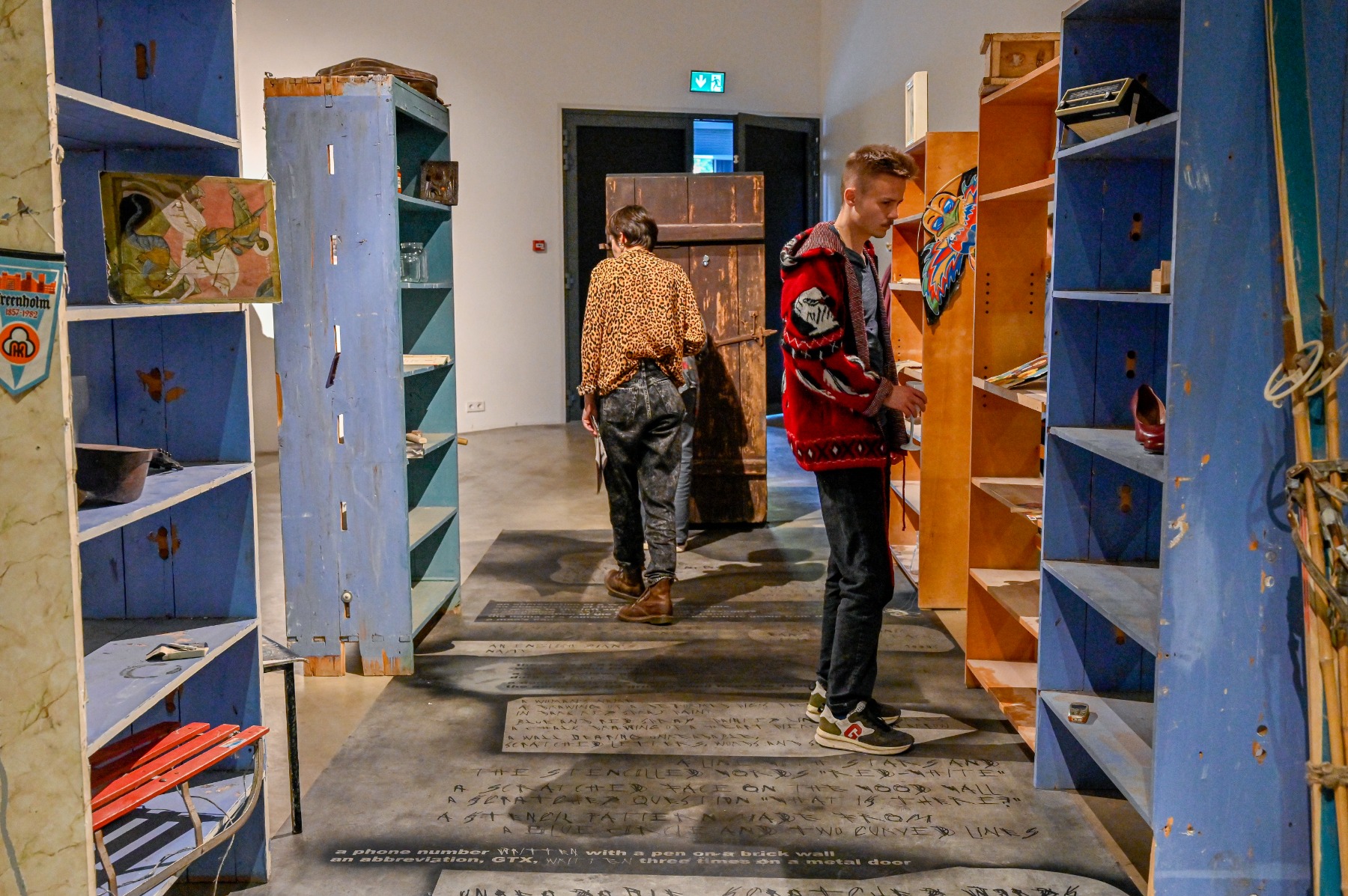

KEEPING THINGS IN THE DARK
Anna Škodenko, Darja Popolitova, Viktor Gurov, Francisco Martínez
Over the past three years, we have visited 37 basements, investigating which things are kept and which practices take place in these time-machines. This 4-artists installation reflects on the underground material culture of this post-industrial, Russian-speaking, ecologically devastated region. It is composed of 4 parts: the ‘Cellar Door’ video installation in which Jelena guides us around her cellar in Kohtla-Järve; the audio-visual sculpture titled ‘Баю-бай’ introduces a surreal video located in a sculpture in the form of a stroller; the visual representation ‘Sartre downstairs’ of various existential messages found in local basements; and ‘Subterranean biographies’, which displays a series of extracted objects alongside personal stories.
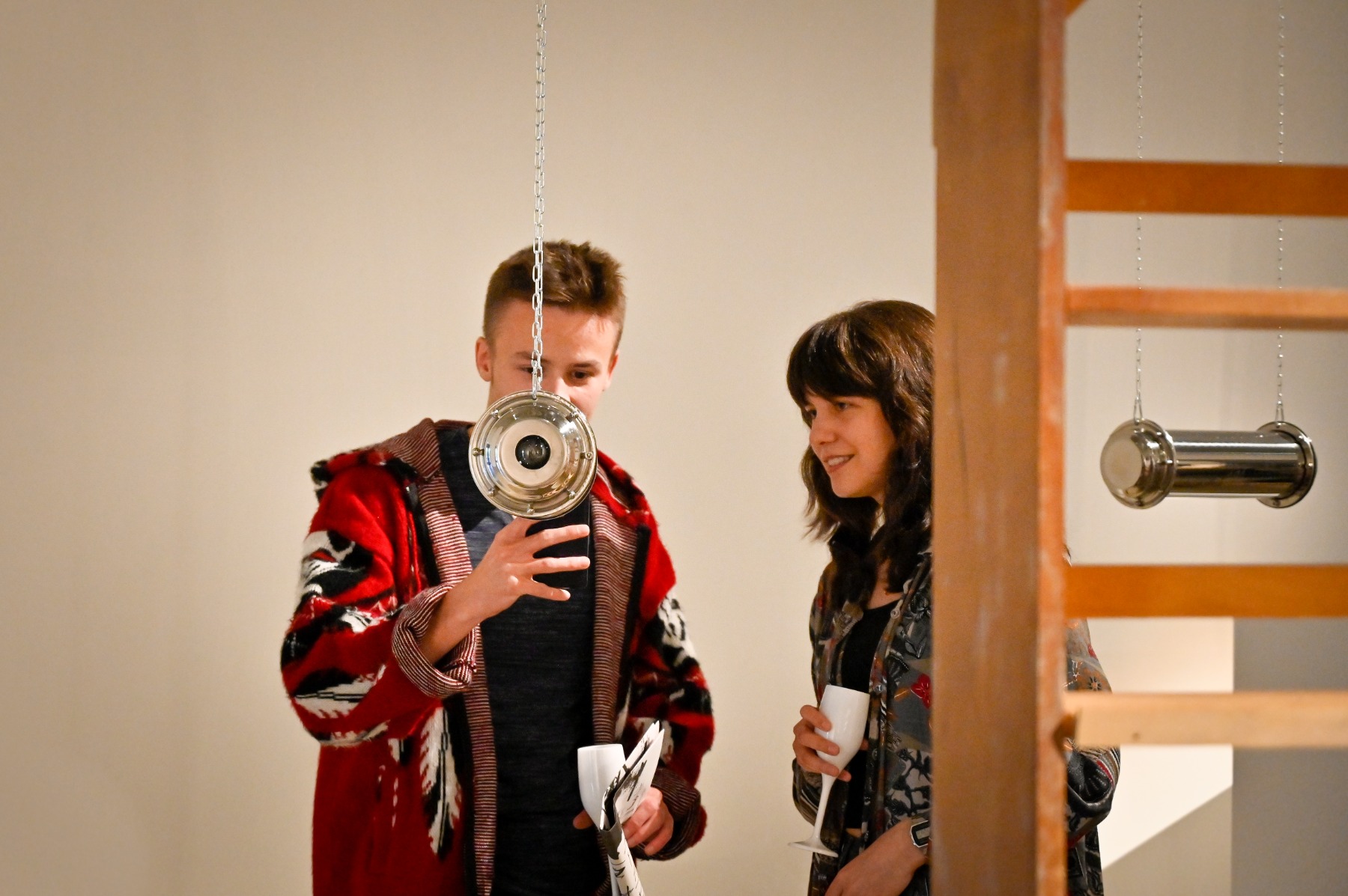

THE PAST OF THE FUTURE
Anna Škodenko
This installation stages a series of encounters with the time capsule which was buried into the ‘Glory to Labour’ monument in 1971 in Kohtla-Järve. Time capsules are windows onto our predecessors’ lives. They are designed to capture the hopes and dreams of those who create it, and thus gently instill a sense of duty to future generations. However, the capsule at hand has a different time sensitivity: with every turn of events the very essence of this capsule changes and alongside it the vision of the future, present and past which it carries within itself.

KRATT© MADE IN IDA-VIRUMAA
Darja Popolitova
A wall installation consisting of sculptured oil shale fragments exposed on 3D-printed shelves. Kratt is a workaholic mythological creature who destroys oneself when its creator entrusts it with impossible tasks. The viewer is presented with the fragmented body parts left over from Krat’s self-immolation. The reason why Kratt was created from oil shale and the kind of impossible tasks given by its creator become clear when visitors take a closer look at the artwork.
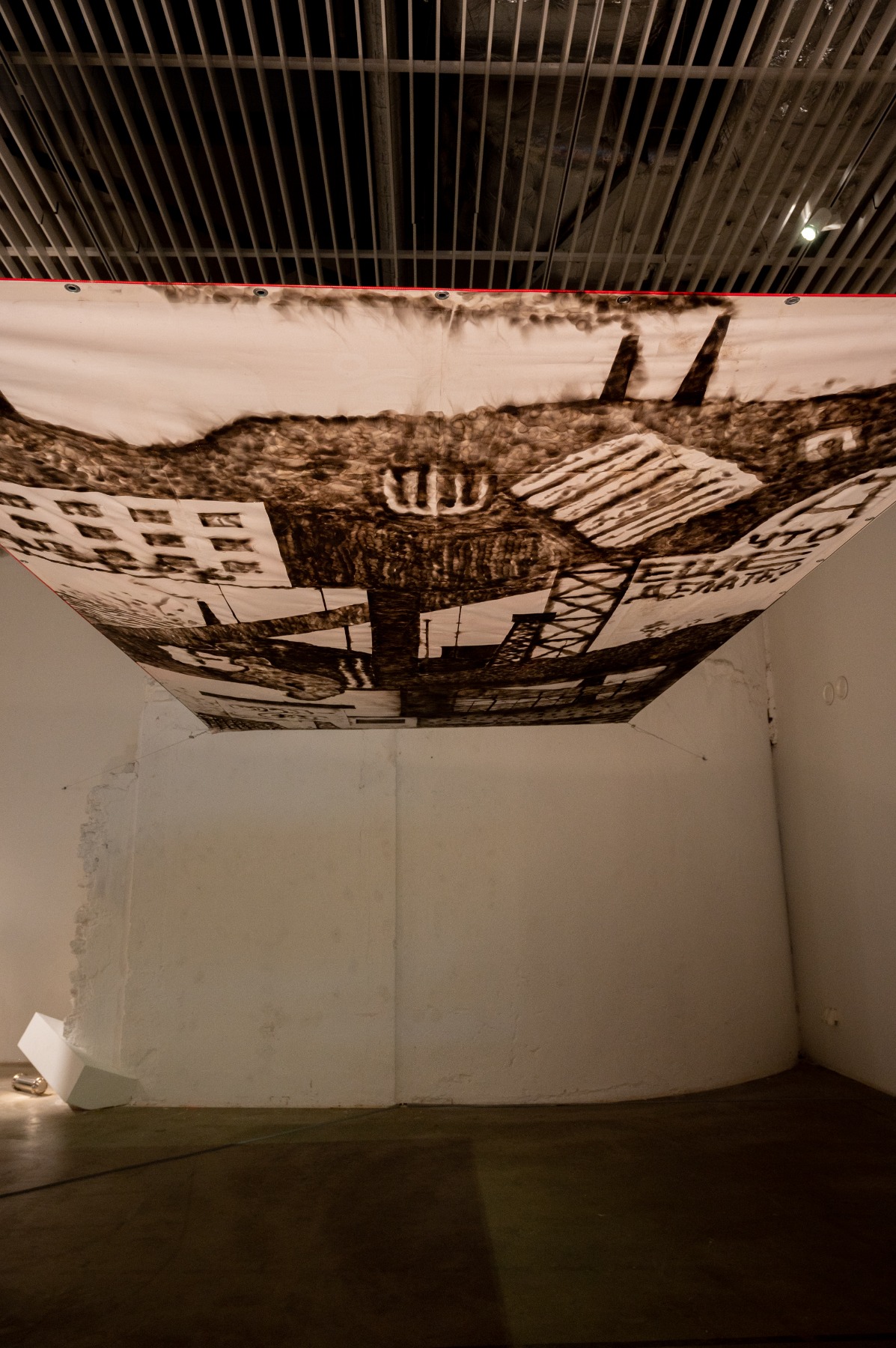
CAVE GHOSTS
Viktor Gurov
This installation combines fumage aesthetics with spatial design. By covering the entrance to the gallery, it reproduces the experience of descending a staircase and stepping into a cellar. Or into a mining tunnel. The signs found in basements (“ghosts”, in graffiti, parlance) make you feel as if Soviet apartment buildings were modern Atapuercas. Indeed, the first paintings were created on the walls and ceilings of caves. The fumage medium also resonates the post-industrial landscape of Ida-Viruma, with highly noticeable chimneys, pipes, factories.
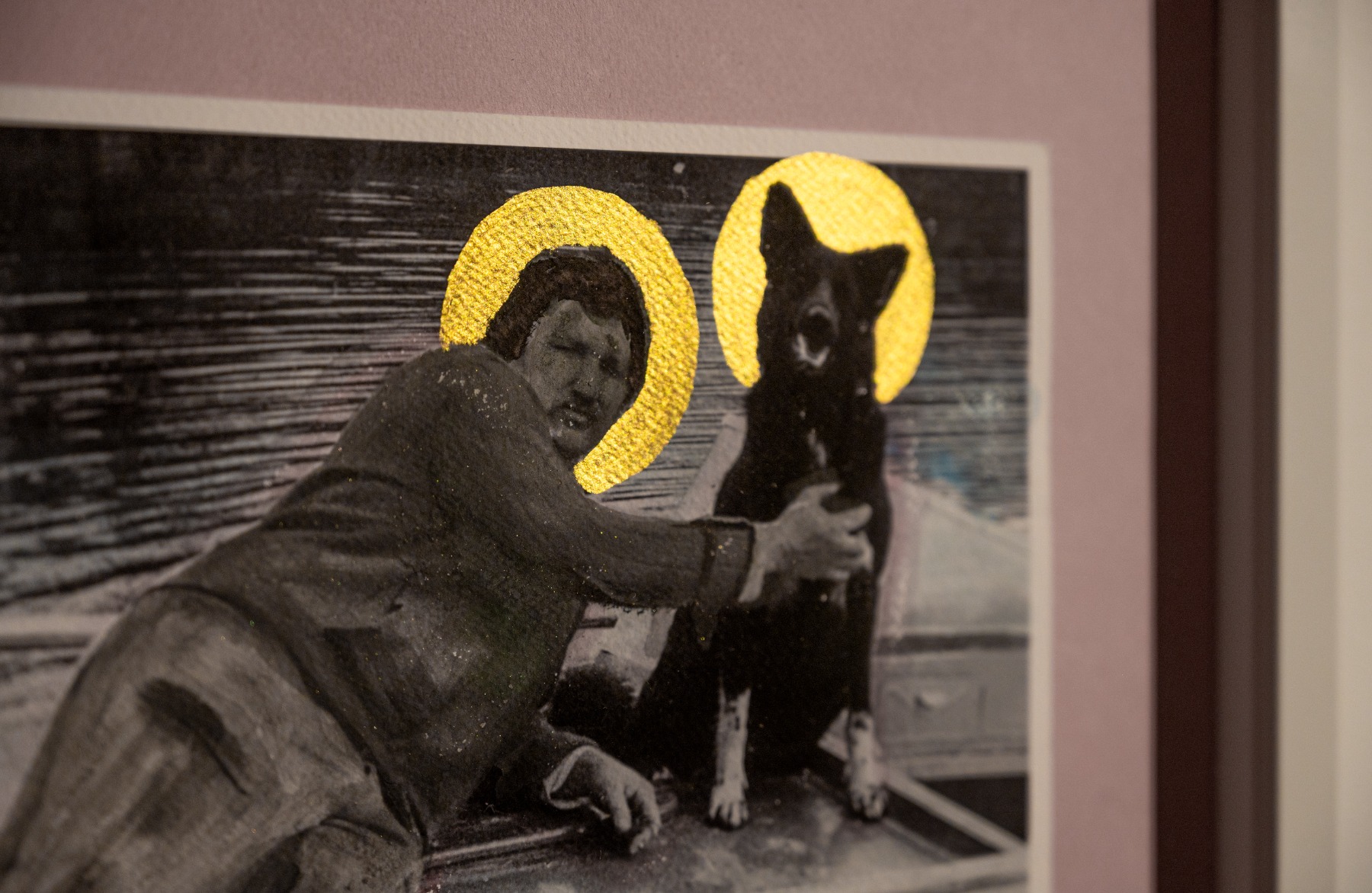
LIQUID SHADOWS AT THE BORDER
Francisco Martínez, Riina Varol, Enas Amerkhanov
This series of Byzantine collages is inspired by the bonding gestures of garage users in Kulgu (aka ‘Narva Venice’), a male territory for doing things other than in the city and being in time at ease. Complementing the coloured photos done by Enas Amerkhanov between 1972 and 1987, we also include a representation of the amphibian structure of the area made with shells. The garages around the water reservoir provide these men an escape from the prosaic solidity of the ordinary, creating a liminal space that is experienced as both sacred and banal simultaneously.